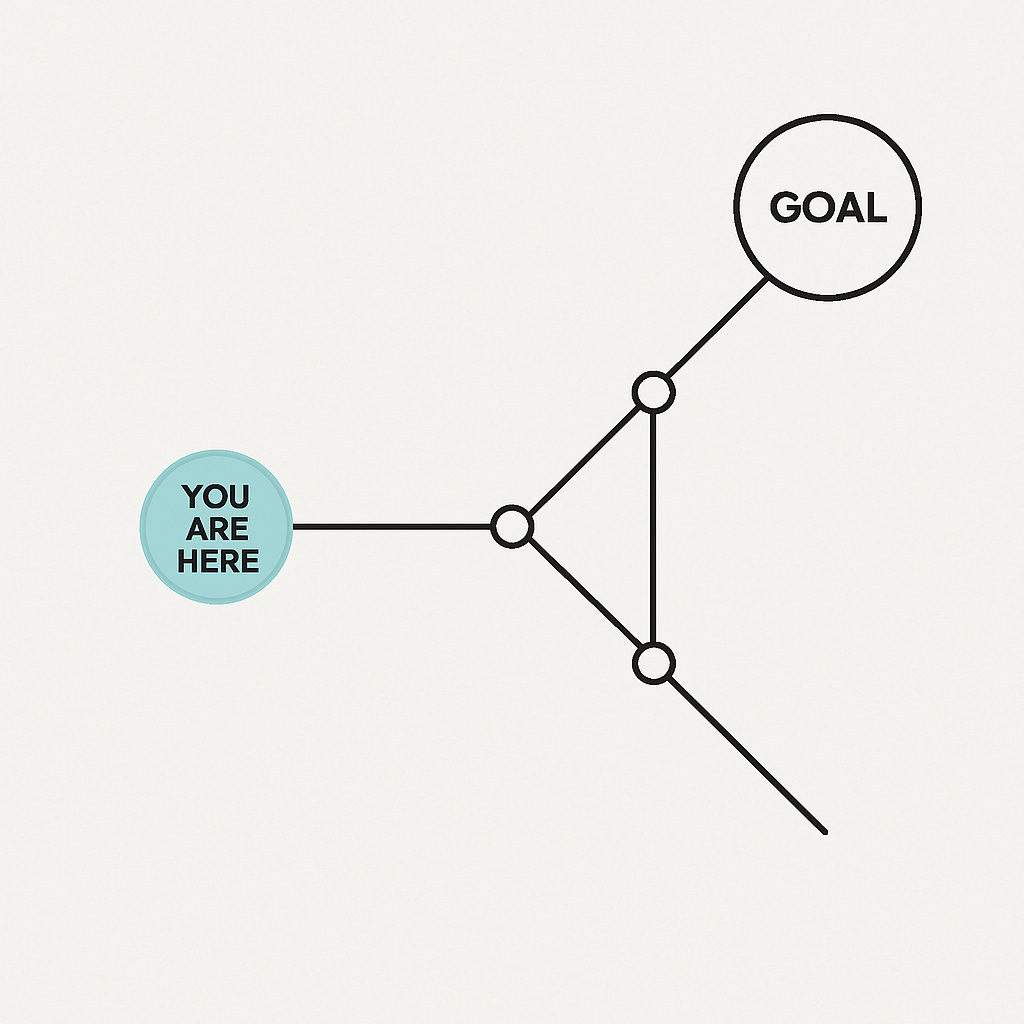The Importance of Starting with Clarity
When it comes to strategic planning, we often focus on the goal.
“You have to know where you’re going in order to get there.” or "Begin with the end in mind” as the popular advice goes.
However, this is only half of the story.
To achieve meaningful outcomes, you first need to know where you are.
As a consultant, I am often brought in to bring clarity and insights to complex situations. I start by mapping the current state. This is a necessary pause to make sense of what is going on in order to chart the right path forward.
In this post, I am going to share what I mean by ecosystem mapping through a mock client project.
A Mock Example - an Elder Home in need of New Tech Tools
These days, many elder care facilities are undergoing rapid digital transformation. New tools - like fall-prevention wearables and AI-powered monitoring systems - are entering the scene.
For leadership teams, this creates a complex challenge: Which technologies to adopt, and which are truly worth investing in?
If I was involved in addressing this challenge, I would start with providing the team with a clear understanding of their current ecosystem.
Here’s how it might look in practice, in a nutshell:
Step 1 - Strategic Mapping
To start, I’d identify all the stakeholders, activities, and tools in the ecosystem.
Executive interviews
Service mapping / staff workflows (e.g. resident onboarding, daily care routines, family communications)
Journey mapping (residents, families)
Review: organization goals, care models, compliance constraints, etc.
Review: current and proposed technologies
Step 2 - Needs Discovery
Next, I will zoom into 2 lenses: cross-organizational needs, and current technology fit.
Stakeholder interviews (leadership, care staff, IT, residents, families, etc.)
Ethnographic observation
Identify key needs, wants, and pains
UX audit /usability tests of existing technologies
Upon completing these 2 steps, the team will be equipped with the necessary foundational materials to move onto the rest of the process:
Step 3: Analysis & Synthesis
Making sense of findings from Step 1 and Step 2, I’d analyze and synthesize the data.
Identify gaps and inefficiencies
Clarify opportunities where technology may add value
Step 4: Prioritization & Alignment
By now we would have a list of requirements and possible technology matches. The team could enter the decision-making stage through evaluating, prioritization, aligning on what matters what.
Develop evaluation and prioritization criteria
Rank technology opportunities by impact, feasibility, urgency, etc.
Make procurement decisions
The Key to Confident Decision-making
Under pressure, teams are often tempted to jump straight to decision-making —skipping ahead to Step 4 and drafting a list of technology requirements based on assumptions or internal opinions. But how confident can we really be in choices made without a full picture?
That’s why Steps 1 and 2 - Strategic Mapping and Needs Discovery - are not optional. They lay the foundation for every decision that follows.
By taking time to clarify the current ecosystem and uncover real needs across stakeholders, teams would be far better equipped to identify what solutions are truly worth their investment.
While this mock project focuses on an elder care facility, this approach can be applied to any organization facing complexity and change - especially when technology is involved. Ultimately, starting with clarity ensures that every step forward is grounded in reality rather than guesswork.
Have you ever found yourself torn between making fast decisions and making good ones? Were you able to convince your team to pause and understand the full picture first?
As always, I’d love to hear your experiences and stories!




